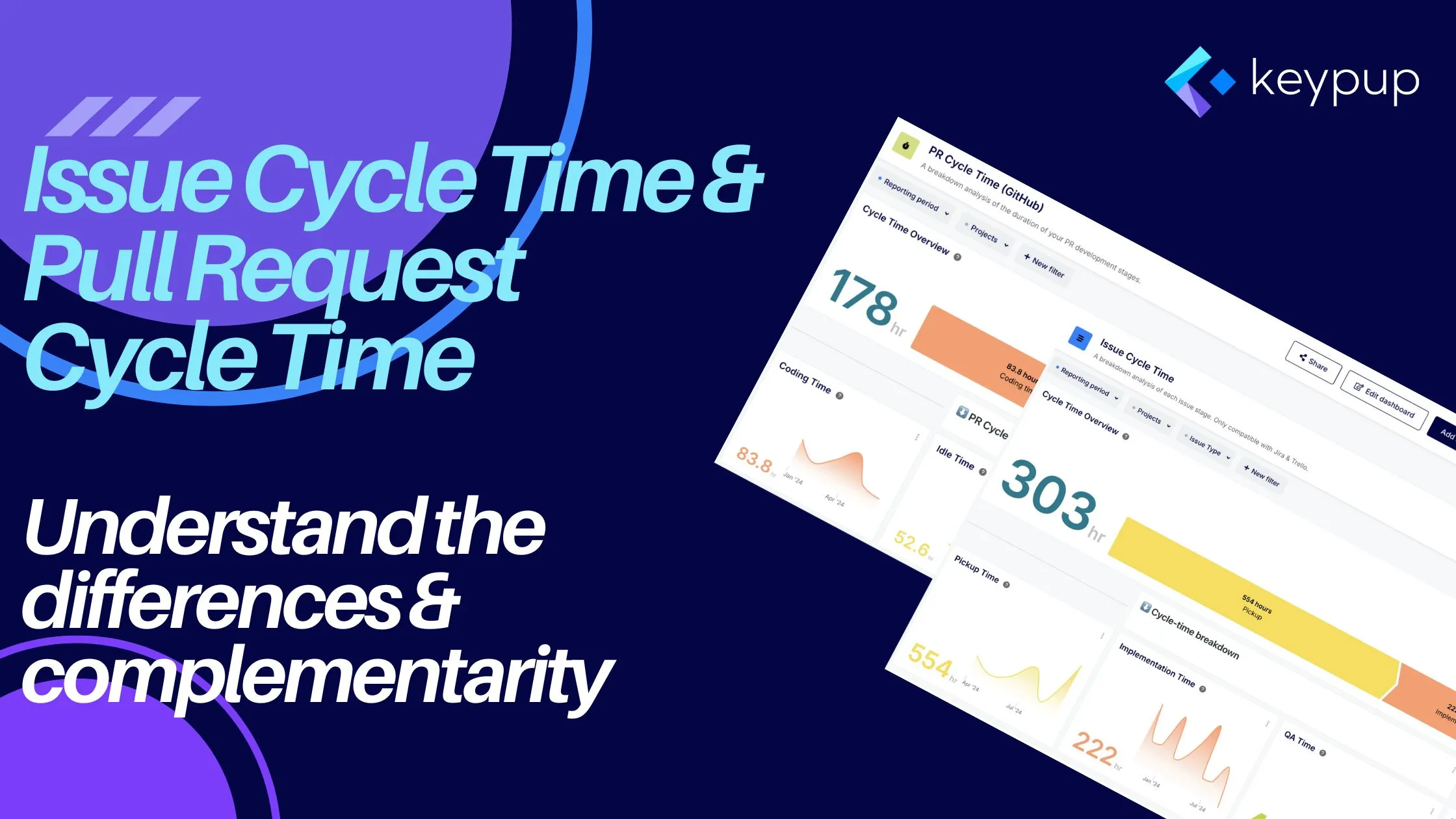Understanding the Differences & Complementarity of Issue Cycle Time and Pull Request Cycle Time



In the world of software development, speed and efficiency are paramount. Teams strive to deliver value to users quickly and consistently. To achieve this, it's crucial to track and optimize various metrics that provide insights into the development process.Two prominent metrics that have become increasingly important are Issue Cycle Time and Pull Request Cycle Time. While often confused, these metrics offer distinct perspectives on the development process, revealing different aspects of team performance and bottlenecks.
Issue Cycle Time (ICT) represents the total time it takes for an issue to move from its creation to its completion. It encompasses all stages of the development life cycle, from initial ideation to final deployment. This metric provides a comprehensive view of the entire development process, allowing teams to identify potential bottlenecks and areas for improvement across all phases.
KeyPup's Issue Cycle Time Dashboard provides an in-depth analysis of ICT, offering insights into:

Pull Request Cycle Time (PRCT) focuses specifically on the implementation stage of the development life cycle. It measures the time taken for a pull request (PR) to be created, reviewed, discussed, merged, and deployed. This metric offers a granular view of the code development and review process, highlighting potential friction points in code collaboration and code quality.
Keypup's PR Cycle Time Dashboard provides valuable insights into:
.webp)
Issue Cycle Time and Pull Request Cycle Time are not mutually exclusive but complementary sets of metrics. While ICT provides a holistic overview of the entire development process, PRCT delves deeper into the implementation stage, offering valuable insights into code review processes and code quality.
Imagine the development process as a journey. The Issue Cycle Time represents the entire journey, from the initial thought to the final destination. The Pull Request Cycle Time is a specific checkpoint within this journey, focusing on the time spent traveling through a particular stretch of the road.
PR Cycle Time is an integral part of the Issue Cycle Time, focusing on the implementation stage. By understanding the bottlenecks within the PR process, teams can optimize code review processes, reduce review times, and improve code quality, ultimately contributing to a faster overall Issue Cycle Time.
Issue Cycle Time and Pull Request Cycle Time are valuable metrics for software development teams. By tracking these metrics, teams can gain valuable insights into their development processes, identify bottlenecks, and implement improvements to increase efficiency and productivity. Understanding the complementarity of these metrics and recognizing PR Cycle Time as a focus within the implementation stage of the Issue Cycle Time allows teams to develop a comprehensive understanding of their development process and optimize it for faster and more effective delivery.

Measuring cycle time in software development is essential for several reasons. It provides valuable insights that help teams understand their development process, identify bottlenecks, and make data-driven decisions to improve efficiency and productivity.
Here's a breakdown of why cycle time matters:
1. Understanding Development Velocity:
2. Identifying Bottlenecks:
3. Improving Efficiency and Productivity:
4. Enhancing Code Quality and Customer Satisfaction:
5. Data-Driven Decision Making:
In summary, measuring cycle time in software development is not just about speed but about achieving quality, efficiency, and customer satisfaction. By using this valuable metric, teams can gain critical insights into their development process, identify areas for improvement, and ultimately deliver better software faster.